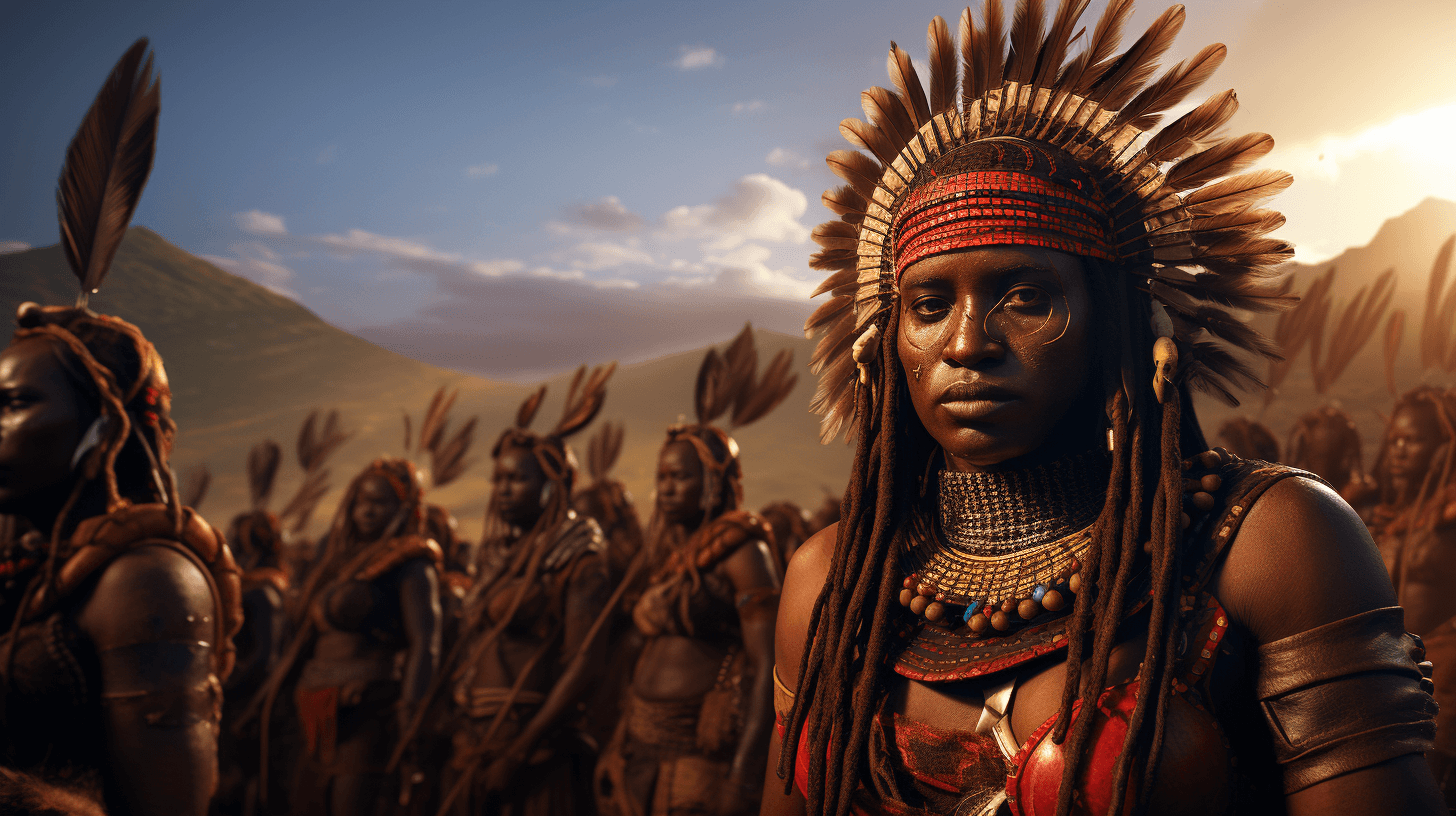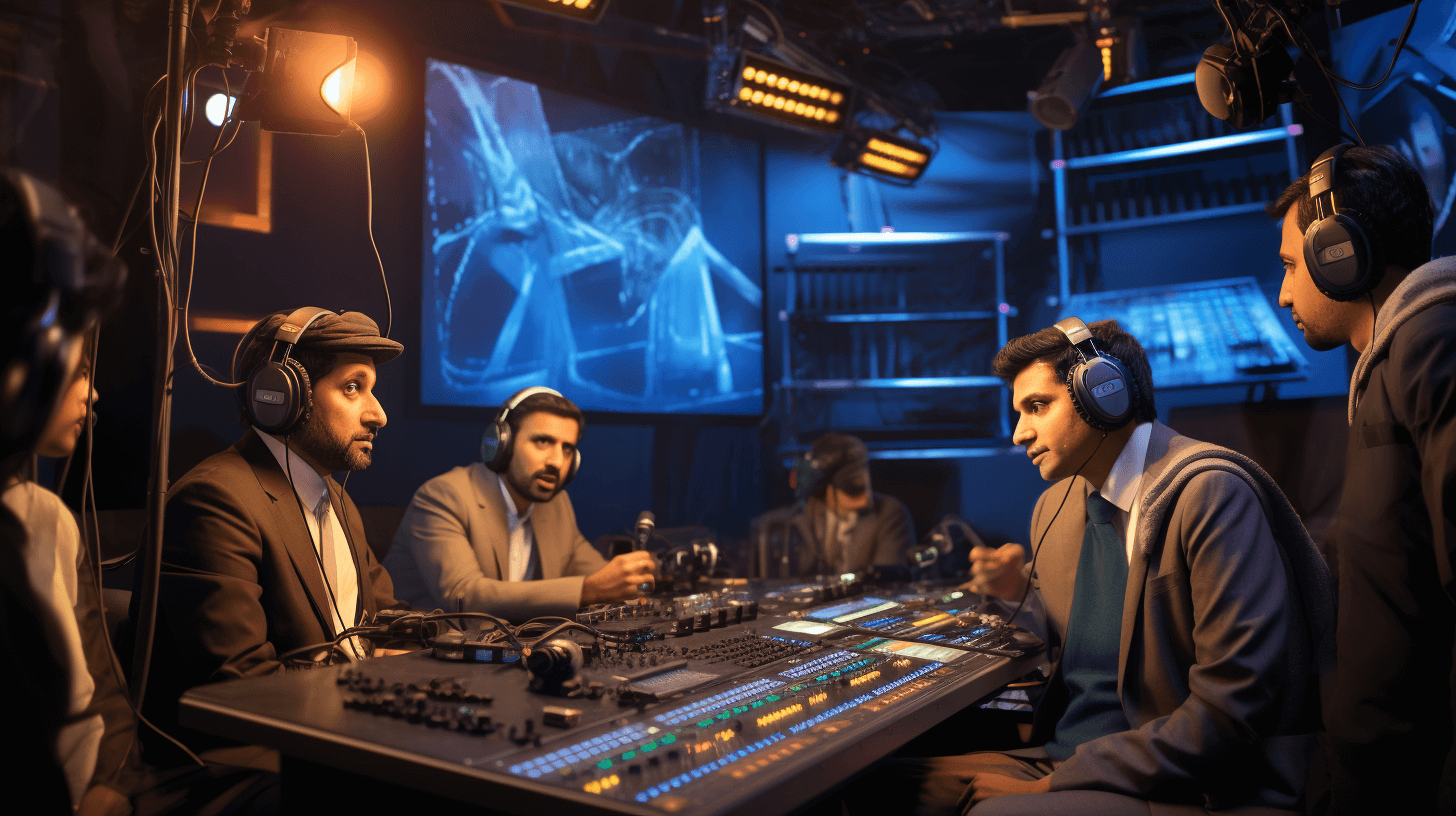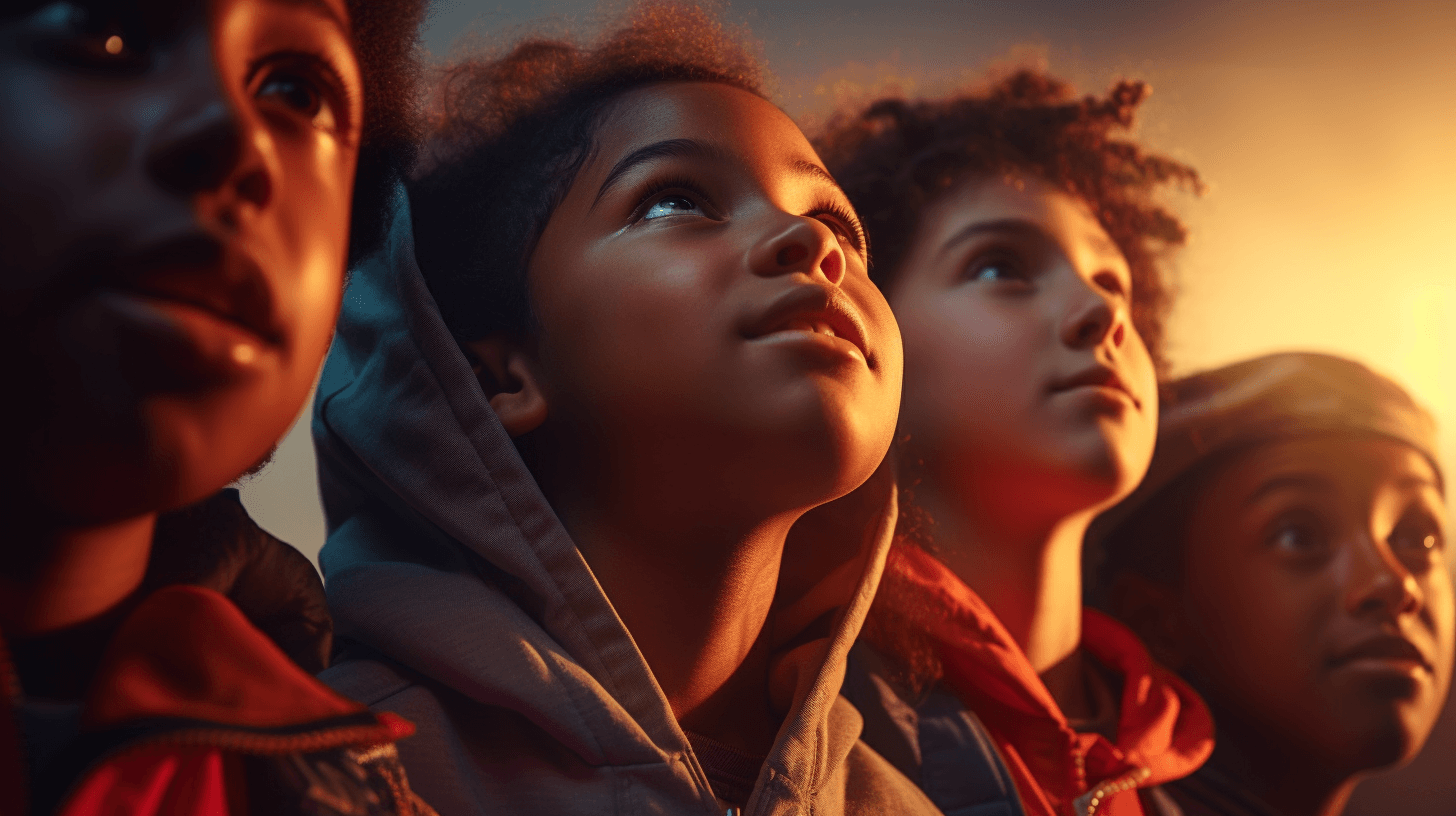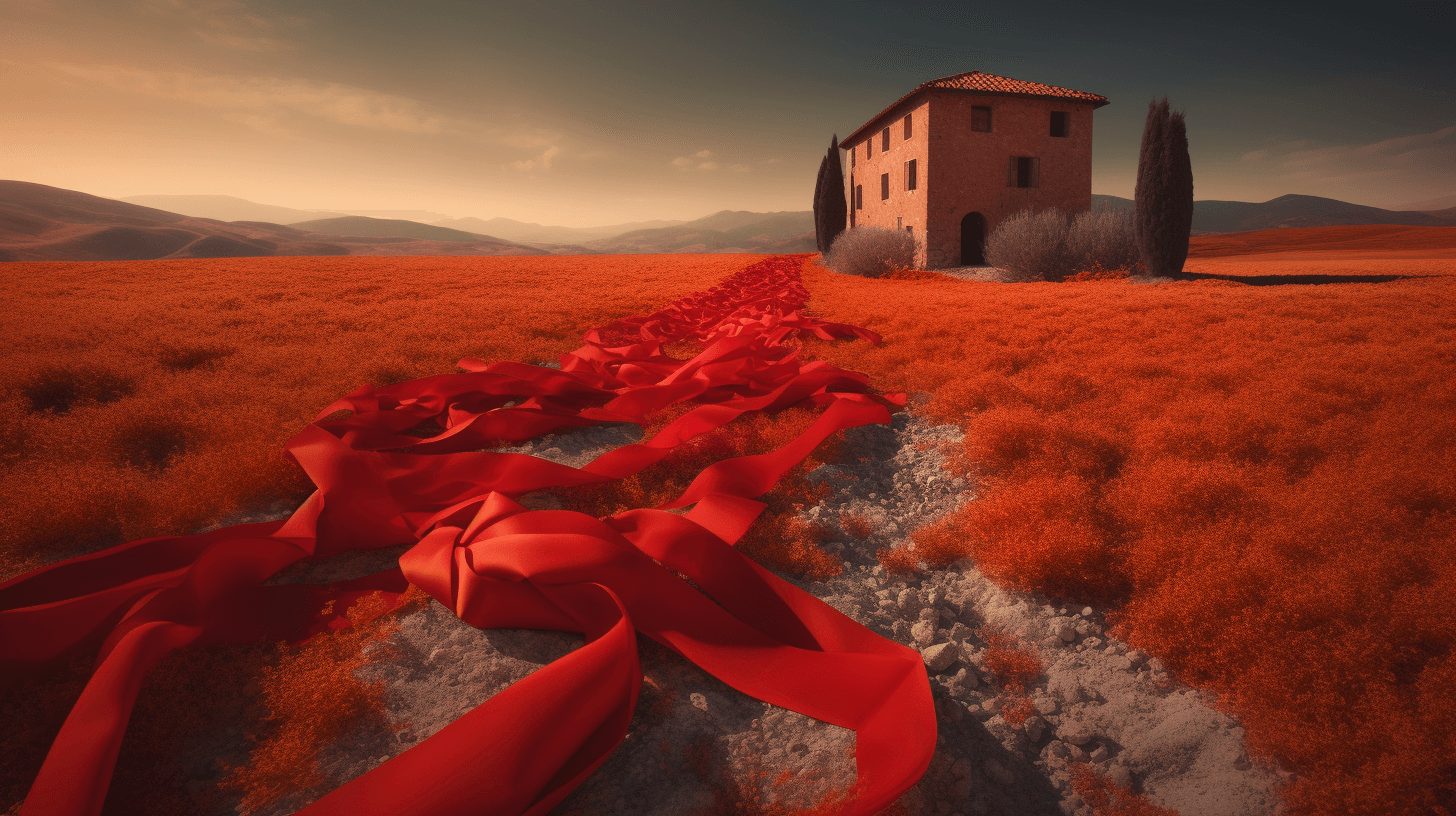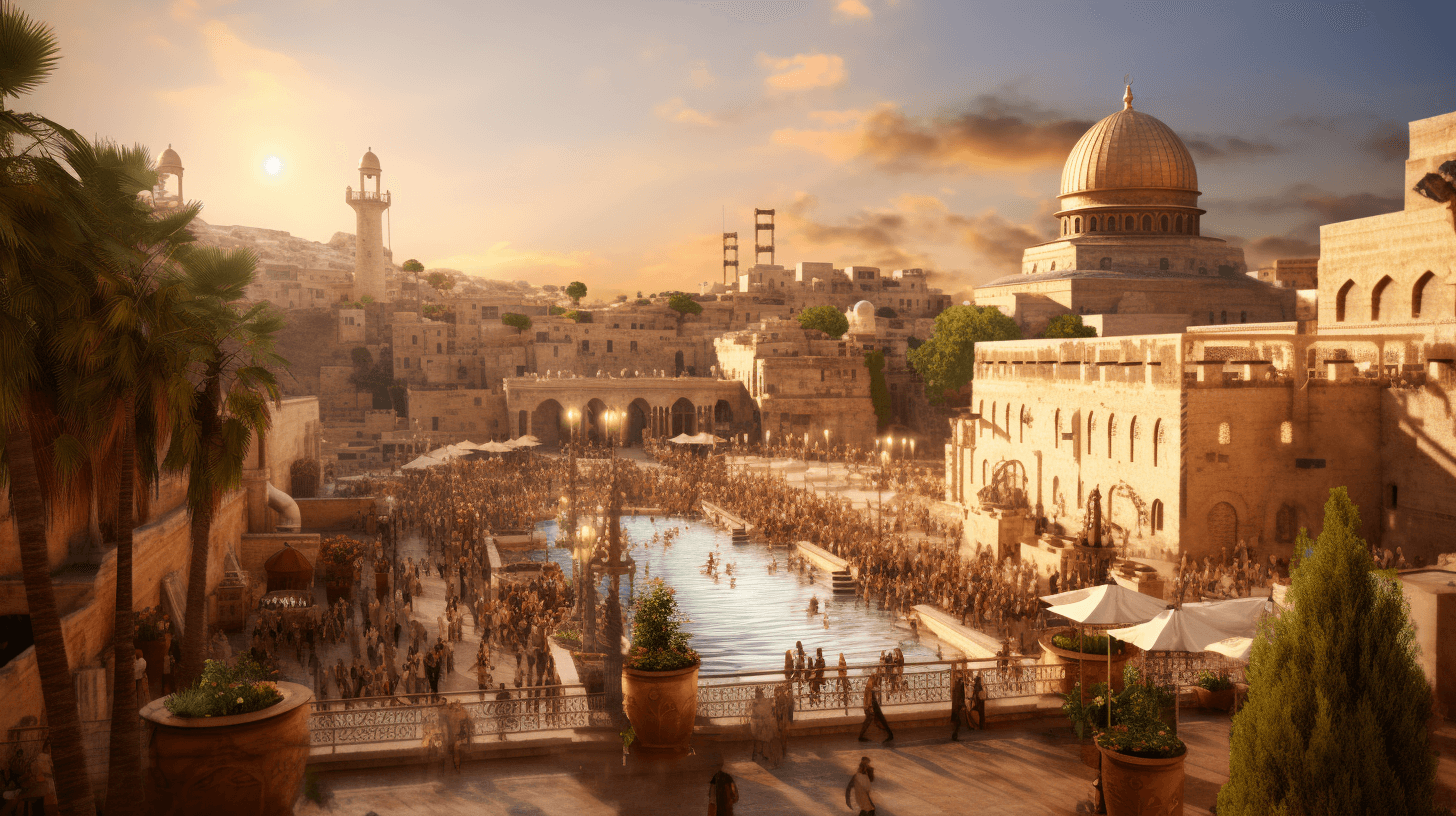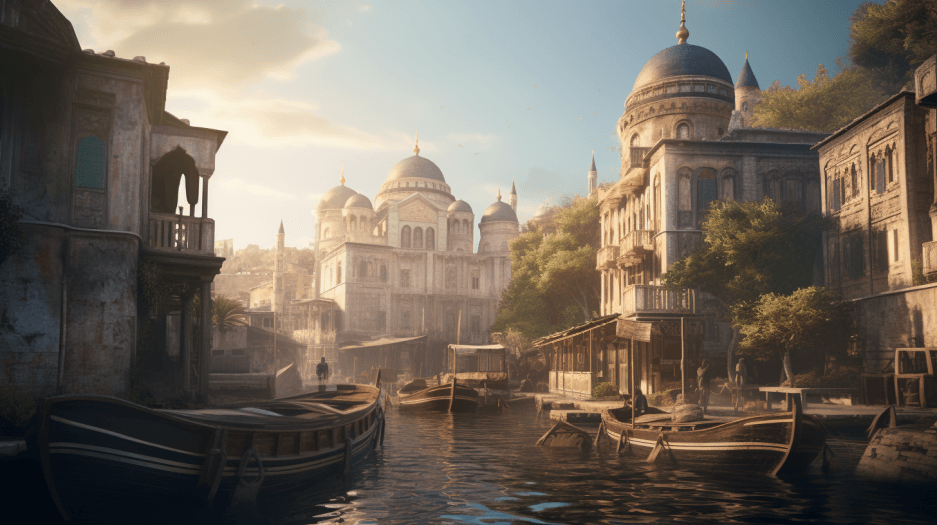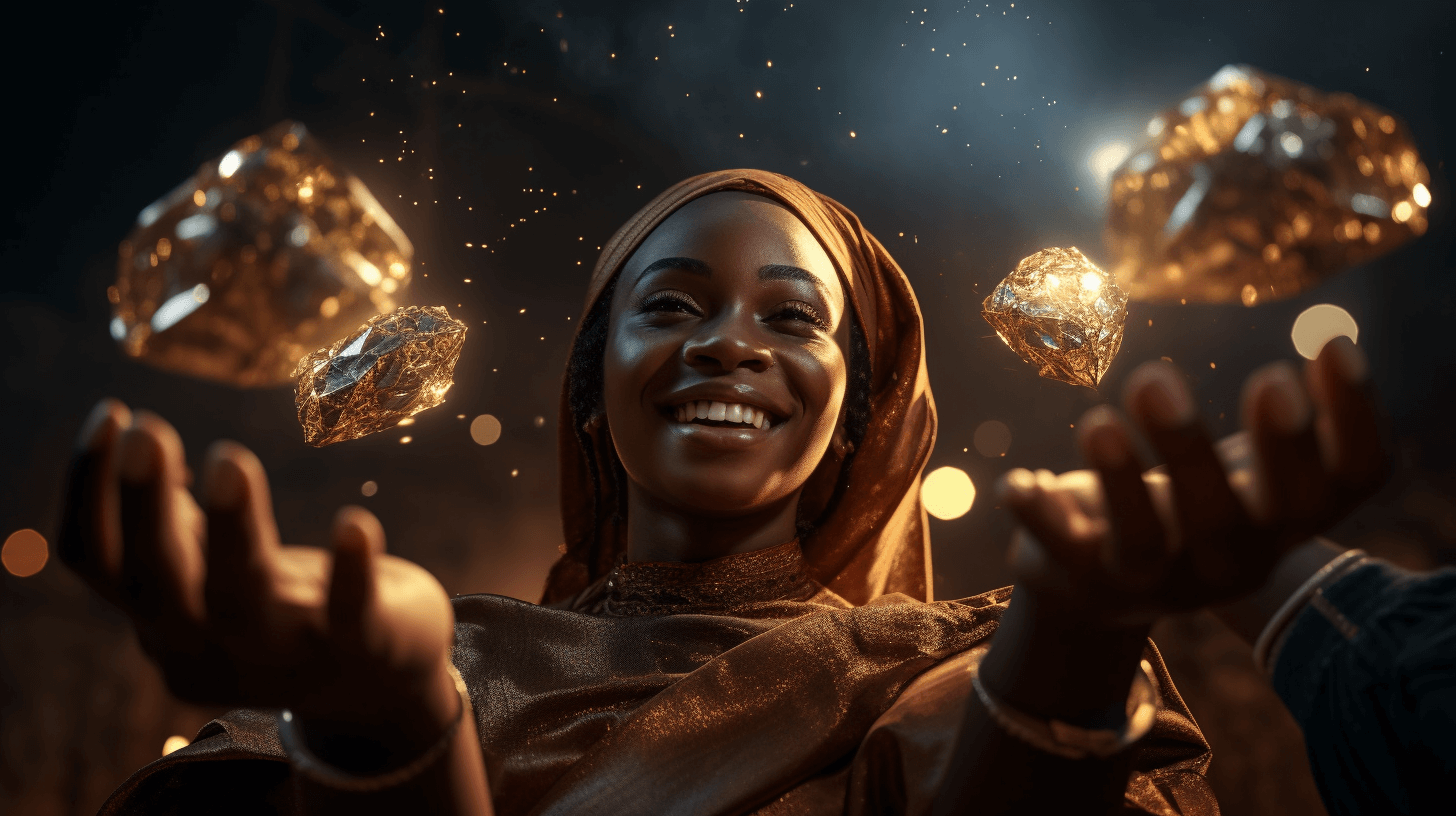🌍📚💻 Da Historians Bringin’ Africa’s Mo’olelo Back fo’ Da Locals
⬇️ Pidgin | ⬇️ ⬇️ English
Chao Tayiana, one Kenyan wahine, had one ‘eureka moment’ wen she wen visit Nairobi’s archives. She get plenny kine thoughts fo’ change da way we see colonial stories – using da kine high-tech stuffs fo’ make da kine lost an’ hidden mo’olelo come out.🗂️💡🇰🇪
Tayiana wen grow up in Ngong town, west side of Nairobi, an’ she wen hear all kine stories ’bout da Tsavo man-eaters. Dose two lions wen make any kine an’ give ‘um to da African an’ Indian workers building da Kenya-Uganda railway back in da late 1800s. Dey wen call John Patterson, one British officer, one hero ’cause he wen kill ‘um.🦁🛤️🇬🇧
Da story ’bout da big, mean cats wen add drama to da romanticized view of railroads. Da haoles wen think ‘um was one way fo’ enter da ‘deep dark interiors of Africa’. Da picture of Patterson wit one of da dead lions wen become da symbol of da haole’s win.📸🏆🌍
Da railroad, wen get built by da British fo’ get control ova da Nile’s source, Lake Victoria in Uganda, wen have mo’ big implications fo’ da UK’s trade relations wit Europe an’ da rest of da world. An’ all da stories about ‘um had been told from one haole perspective. Tayiana’s school history lessons wen stay da same, an’ she neva wen tink question ‘um. 🚂💰🌎
But wen she was in her early 20s, she wen realize get one ‘different kine story’ need fo’ tell. While she was studying computer science in college, she wen start one history blog fo’ fun. She wen get choke messages from Kenyans all ova da country an’ in da diaspora in response to one post she wen write about da birth of Nairobi. 🖥️🎓💌
Right around da same time, during one of her regular trips to da national archives in Nairobi, she wen spot one unusual reference among da regular reports. Da report wen suggest dat some communities wen believe dat da Tsavo lions was da spirits of dead chiefs who was against da building of da railroad.📜🦁👻
Tayiana wen get curious about dis interpretation of da events an’ she like know more about how da other Kenyans who wen live around da stations or work inside ‘um, was thinking about da railroad. So, she wen decide fo’ go look. Over da next four years, she wen visit more than 55 stations all ova da country, taking photos an’ talking story wit da people, in one project she would lata call Save da Railway. 🚂📸🗣️
“As I wen go along, I wen make all these connections dat I neva wen make in school,” she says. She wen find out, fo’ example, dat plenny railroad lines wen start or end in areas wit haole settler populations – one sign, she believes, dat Africans was not da target market. Some people she wen meet remembered da railroad in one good way, describing how dey used ‘um to go school, work, or even to bury their dead – but oddas remembered how it had taken their ‘aina. Tayiana wen document da info an’ photos she wen gather on da Save da Railway website, which is now one of da most detailed an’ easy fo’ access archives on da old stations. 🛤️📚🌍
Da project wen be one turning point fo’ Tayiana, making her feel like history “is one living thing” – something she wen learn from small kid time through da stories her tutu wahine an’ tutu kāne wen tell her an’ da old books, photos, magazines, an’ stuffs they wen share – an’ changing da way she see her role as one historian. 📖💖🧓👵
“Get plenny wrong in remembering yo’self through da way somebody else see you,” she says. “Our history was something dat we was ‘told’, was neva something we did or contributed to. Save da Railway was dat ‘eureka moment’ – was dat big realization fo’ me dat I am one active contributor to da creation an’ understanding of our history.” 📚💡🌍
After she wen finish her degree, Tayiana did one master’s in heritage visualisation and documentation at Glasgow School of Art. She say ova dea, she “wen find da words an’ da way” fo’ do what she was already doing in Kenya, wea da digitization of cultural heritage still in da early stages. 🎓💻🎨
In 2018, she wen co-found da Museum of British Colonialism, one volunteer group calling fo’ “a more truthful account of British colonialism”.
Da museum – which no get any artefacts or physical presence – is meant to shatter da regular ideas an’ symbolism of bricks an’ mortar spaces. One online archive, it features reconstructions of concentration camps wea British soldiers wen hold about 1.5 million Kenyans suspected of being part of da Mau Mau rebellion, an’ committing choke bad kine stuffs against ‘um, including torture an’ rape. Da colonial administration was lata found to have destroyed or hid plenny of dose records, an’ Kenya’s first post-colonial government chose to implement one “forgive and forget” policy. 🏢🖥️💔
“We so no more visual imagery dat we not even able fo’ picture fully what wen happen in dis country,” Tayiana say, who wen create da reconstructions based on visits to old detention camps, which plenty times not even marked after turning into schools or prisons. 🏫🔗🌍
“I go these towns an’ I neva would have known was one detention camp dea,” she say. “How can be possible dat they can just disappear from one country’s landscape… in one nation dat wen go through unspeakable, gruesome acts in da fight fo’ its independence?” 🤔💔🇰🇪
Tayiana also wen co-found Open Restitution Africa, one initiative dat maps data on da return of African treasures dat was taken or stolen by former colonial powers, an’ documents da demands fo’ dese artefacts. Information ’bout restitution was all over da place, she say, an’ its “progress an’ complexities couched from da perspective of da west”. 🗺️🏺📃
Nearly 10 years after da railway project, Tayiana’s approach to Kenyan an’ African history is making waves. Dis year she wen get awarded da Dan David prize fo’ her work in centering African stories within da digital space at a time when “plenty African an’ Afro-diasporic audiences looking to reclaim their past an’ take back control ova their identities”. 🏆📚🌍
Through African Digital Heritage, a non-profit she wen create in 2019, she works wit museums to reimagine how they preserve an’ digitise African history an’ culture. Museums, she say, traditionally was there to cater to haole curiosity rather than for Africans to understand their history. 🏛️🖥️🎨
“You wen take history an’ separated it from da people – everything is in glass cases wit no much information – how da people supposed to engage? African museums should be about repair, they should focus on making talk story,” she argue. 🏺🖼️🗣️
Even though she starting to get recognized, being one digital heritage pioneer in Kenya means dat her work was often not taken seriously, an’ she get small kine financial support for her groundbreaking research. But even with da struggles, Tayiana, who describe herself as a “stubborn historian”, would do ‘um all again. 💪💰🔍
“I like my mo’opuna to find their answers in my work,” she say. Even more than dat, she sees her work resonating wit Kenyans now. 🌱📚🇰🇪
“Da comment I always get is – why we neva learn dis in school?” Tayiana say. “Is one kine recognition to hear people say – ‘dis is so important, why we wen get denied access to dis information?’” 🎓📚❓
Dat’s all for now, folks! ‘Til da next time, stay curious, stay strong, an’ keep looking fo’ da mo’olelo dat matter to you. ✌️🏝️🌈
NOW IN ENGLISH
🌍📚💻 The Historians Bringing Africa’s History Back for the Locals
Chao Tayiana, a Kenyan woman, had a moment of revelation when she visited Nairobi’s archives. She had many ideas about changing the way we view colonial stories – using cutting-edge technology to unearth lost and hidden histories.🗂️💡🇰🇪
Tayiana grew up in Ngong town, west of Nairobi, where she heard stories about the Tsavo man-eaters. These two lions terrorized the African and Indian workers building the Kenya-Uganda railway in the late 1800s. John Patterson, a British officer who killed them, was hailed as a hero. 🦁🛤️🇬🇧
The tale of these ferocious beasts added drama to the romanticized view of railroads. The colonialists saw them as a gateway to the ‘deep, dark interiors of Africa’. A photograph of Patterson with one of the dead lions symbolized the colonial triumph. 📸🏆🌍
The railroad, constructed by the British to gain control over the source of the Nile, Lake Victoria in Uganda, had significant implications for the UK’s trade relations with Europe and the world. However, all the narratives about it had been from a colonial perspective. Tayiana’s history lessons at school reinforced this viewpoint, and she never thought to question it. 🚂💰🌎
But in her early 20s, she realized there was a ‘different story’ that needed telling. While studying computer science in college, she started a history blog for fun. She received numerous messages from Kenyans all over the country and in the diaspora in response to a post she wrote about the birth of Nairobi. 🖥️🎓💌
Around the same time, during one of her regular visits to the national archives in Nairobi, she stumbled upon an unusual reference in the reports. It suggested that some communities believed that the Tsavo lions were the spirits of dead chiefs who were against the building of the railroad. 📜🦁👻
Tayiana became curious about this interpretation of events and wanted to know more about how other Kenyans who lived near the stations or worked on them perceived the railroad. So, she decided to investigate. Over the next four years, she visited more than 55 stations across the country, photographing them and speaking with locals, in a project she would later call Save the Railway. 🚂📸🗣️
“As I went along, I made all these connections that I never made in school,” she says. She found out, for instance, that many railroad lines started or ended in areas with white settler populations – a sign, she believes, that Africans were not the target market. Some people she met remembered the railroad fondly, describing how they used it to go to school, work, or even to bury their dead – but others remembered how it had taken their land. Tayiana documented the information and photos she collected on the Save the Railway website, which is now one of the most detailed and accessible archives on the old stations. 🛤️📚🌍
The project was a turning point for Tayiana, making her feel like history “is a living thing” – something she had learned from childhood through the stories her grandparents told her and the old books, photos, magazines, and artifacts they shared – and changing how she saw her role as a historian. 📖💖🧓👵
“There is a lot wrong in remembering yourself through the way someone else sees you,” she says. “Our history was something that we were ‘told’, it was never something we did or contributed to. Save the Railway was that ‘eureka moment’ – that big realization for me that I am an active contributor to the creation and understanding of our history.” 📚💡🌍
After finishing her degree, Tayiana pursued a master’s in heritage visualization and documentation at the Glasgow School of Art. There, she “found the words and the means” to do what she was already doing in Kenya, where the digitization of cultural heritage is still in its early stages. 🎓💻🎨
In 2018, she co-founded the Museum of British Colonialism, a volunteer group calling for “a more truthful account of British colonialism”.
The museum – which doesn’t have any physical presence – is designed to challenge the conventional ideas and symbolism of brick-and-mortar spaces. An online archive, it features reconstructions of concentration camps where British soldiers held about 1.5 million Kenyans suspected of being part of the Mau Mau rebellion, committing terrible atrocities against them, including torture and rape. The colonial administration was later found to have destroyed or hidden many of these records, and Kenya’s first post-colonial government chose to implement a “forgive and forget” policy. 🏢🖥️💔
“There is so little visual imagery that we can’t even fully picture what happened in this country,” Tayiana says. She created the reconstructions based on visits to old detention camps, which often aren’t marked after being turned into schools or prisons. 🏫🔗🌍
“I visited these towns and I would never have known there was a detention camp there,” she says. “How is it possible that they can just disappear from a country’s landscape… in a nation that went through unspeakable, gruesome acts in the fight for its independence?” 🤔💔🇰🇪
Tayiana also co-founded Open Restitution Africa, an initiative that maps data on the return of African treasures that were taken or stolen by former colonial powers, and documents the demands for these artefacts. Information about restitution was scattered, she says, with its “progress and complexities presented from the perspective of the west”. 🗺️🏺📃
Nearly 10 years after the railway project, Tayiana’s approach to Kenyan and African history is making waves. This year, she was awarded the Dan David prize for her work in centering African stories within the digital space at a time when “many African and Afro-diasporic audiences are looking to reclaim their past and take back control over their identities”. 🏆📚🌍
Through African Digital Heritage, a non-profit she founded in 2019, she works with museums to reimagine how they preserve and digitize African history and culture. Museums, she says, traditionally existed to cater to white curiosity rather than for Africans to understand their history. 🏛️🖥️🎨
“You took history and separated it from the people – everything is in glass cases with little information – how are people supposed to engage? African museums should be about repair, they should focus on dialogue,” she argues. 🏺🖼️🗣️
Even though she’s starting to gain recognition, being a digital heritage pioneer in Kenya means that her work often isn’t taken seriously, and she receives minimal financial support for her groundbreaking research. But despite the struggles, Tayiana, who describes herself as a “stubborn historian”, would do it all over again. 💪💰🔍
“I want my grandchildren to find”🌍📚💻 Unearthing Africa’s History: A Local Perspective from Digital Historians
Chao Tayiana, a Kenyan woman, experienced an epiphany while visiting the archives in Nairobi. She pondered deeply about changing the way we perceive colonial narratives – harnessing the power of advanced technology to reveal obscured and forgotten tales.🗂️💡🇰🇪
Tayiana, raised in the town of Ngong, west of Nairobi, grew up hearing tales of the Tsavo man-eaters, two notorious lions that terrorized African and Indian workers during the construction of the Kenya-Uganda railway in the late 1800s. British officer John Patterson was hailed as a hero for killing the lions.🦁🛤️🇬🇧
The harrowing tales of the predatory lions added drama to the romanticized views of the railways. Colonizers perceived the railway as a gateway into the ‘deep dark interiors of Africa’. A photograph of Patterson alongside one of the slain lions became emblematic of colonial triumph.📸🏆🌍
The railway, constructed by the British to control the source of the Nile, Lake Victoria in Uganda, had significant implications for the UK’s trade relations with Europe and the rest of the world. Most of these stories were told from a colonial perspective, a bias that was also reflected in Tayiana’s school history lessons. She never thought to question it.🚂💰🌎
However, in her early 20s, Tayiana realized that there were untold stories that needed to be heard. While studying computer science at university, she started a history blog for fun. A post she wrote about the birth of Nairobi sparked a flood of messages from Kenyans across the country and abroad.🖥️🎓💌
Around the same time, on a regular visit to the national archives in Nairobi, she stumbled upon an unusual reference in a report. The report hinted at some communities’ belief that the Tsavo lions were the spirits of deceased chiefs who were opposed to the construction of the railway.📜🦁👻
Intrigued by this interpretation, Tayiana set out to explore how the people living and working around the stations perceived the railway. Over the next four years, she visited more than 55 stations across the country, taking photos and collecting stories, for a project she later named ‘Save the Railway’.🚂📸🗣️
“As I travelled, I made connections I had not made in school,” she recalls. She discovered, for example, that many railway lines began or ended in areas with colonial settler populations – a clue, she believes, that Africans were not the intended market. While some people she met had fond memories of the railway, others remembered the lands it had seized. Tayiana documented her findings and photos on the ‘Save the Railway’ website, which has become one of the most comprehensive and accessible archives of the old stations.🛤️📚🌍
The project marked a turning point for Tayiana, making her realize that history is a “living entity” – a lesson she learned from the stories her grandparents shared with her and from old books, photos, and magazines. It also reshaped her view of her role as a historian. 📖💖🧓👵
“There is a flaw in remembering yourself through the way others see you,” she says. “Our history was something that we were ‘told’, not something we contributed to. ‘Save the Railway’ was my ‘eureka moment’ – it made me realize that I am an active participant in the creation and understanding of our history.”📚💡🌍
After completing her degree, Tayiana pursued a master’s in heritage visualisation and documentation at the Glasgow School of Art. There, she found the language and methodology for what she was already doing in Kenya, where the digitization of cultural heritage was still in its infancy.🎓💻🎨
In 2018, she co-founded the Museum of British Colonialism, a volunteer group calling for “a more truthful account of British colonialism”.
The museum – without any physical artifacts or premises – aims to disrupt the conventional symbolism associated with physical spaces. As an online archive, it features reconstructions of concentration camps where British soldiers detained about 1.5 million Kenyans suspected of being part of the Mau Mau rebellion, committing horrific acts against them, including torture and rape. The colonial administration was later found to have destroyed or hidden many of those records, and Kenya’s first post-colonial government opted for a “forgive and forget” policy.🏢🖥️💔
“We lack so much visual imagery that we can’t fully visualize what happened in this country,” Tayiana laments. She created the reconstructions based on visits to old detention camps, which are often unmarked and repurposed as schools or prisons. 🏫🔗🌍
“I visited these towns, and I wouldn’t have known there was a detention camp there,” she says. “How can these sites just disappear from a country’s landscape… in a nation that underwent unspeakable, gruesome acts in the fight for its independence?”🤔💔🇰🇪
Tayiana also co-founded Open Restitution Africa, an initiative that maps the return of African treasures that were taken or stolen by former colonial powers and documents the demands for these artifacts. Information about restitution is scattered and often framed from a Western perspective, she says.🗺️🏺📃
Nearly a decade after the railway project, Tayiana’s approach to Kenyan and African history is making waves. This year, she received the Dan David Prize for her work in centering African stories within the digital space at a time when “many African and Afro-diasporic audiences are looking to reclaim their past and regain control over their identities”.🏆📚🌍
Through African Digital Heritage, a non-profit she established in 2019, she collaborates with museums to reimagine how they preserve and digitize African history and culture. She believes that museums have traditionally served to satisfy colonial curiosity rather than to help Africans understand their own history. 🏛️🖥️🎨
“History has been separated from the people – everything is displayed in glass cases with little context – how are people supposed to engage? African museums should be about repair, they should focus on facilitating dialogue,” she argues.🏺🖼️🗣️
Despite gaining recognition, being a pioneer of digital heritage in Kenya means her work often isn’t taken seriously, and she receives limited financial support for her groundbreaking research. But even with these challenges, Tayiana, who describes herself as a “stubborn historian”, would do it all over again.💪💰🔍
“I want my descendants to find their answers in my work,” she says. More importantly, she sees her work resonating with Kenyans now.🌱📚🇰🇪
“The comment I often get is – why didn’t we learn this in school?” Tayiana says. “It’s heartening to hear people say – ‘this is so important, why were we denied access to this information?

